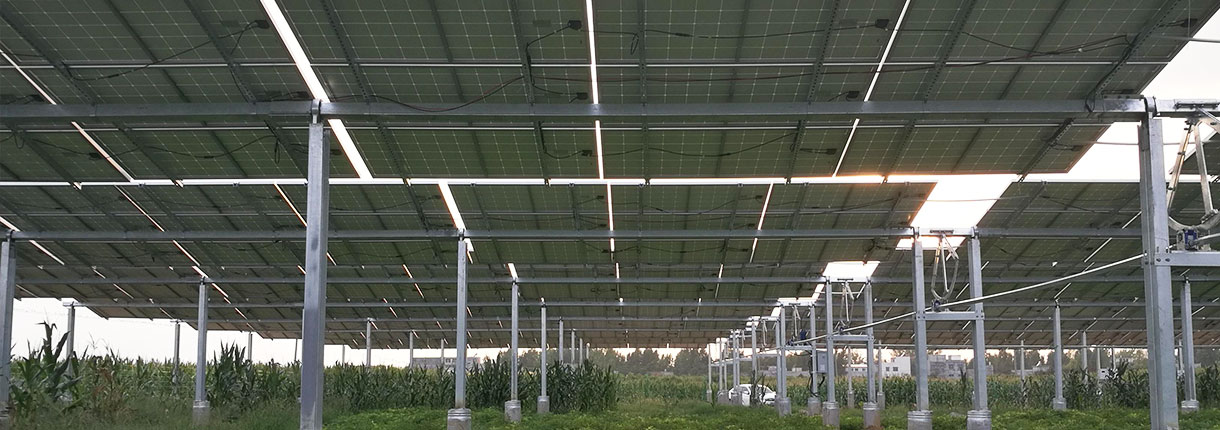Installation method: horizontal single shaft - tracking type
Material: hot dip galvanized steel / Zn-Al-Mg steel / weather resistant steel
Origin: Tianjin Jinghai
In the tracking mode, horizontal single axis tracking is used widly, which is divided into north-south axis tracking and east-west axis tracking. East-west axis tracking has no obvious advantages over fixed inclined installation, and the north-south axis tracking effect is better than east-west axis tracking. Horizontal uniaxial tracking is especially suitable for low latitude areas.
The figure shows the schematic diagram of two groups of flat single axis tracking arrays. Each battery array has its own rotating shaft, which is parallel to the north-south direction line of the ground. The rotating shaft is installed on the support, and the battery array can rotate around its own rotating shaft. The yellow arrow line in the figure indicates the direction of sunlight. The rotation is controlled by the sun tracking control device to make the vertical plane of the rotation axis of the battery panel parallel to the sunlight. Figure 1 shows the state at 12 noon, and the surfaces of the two battery arrays are horizontal and upward.

Horizontal single axis tracking system is a tracking system that rotates around one-dimensional axis to make the light receiving surface of photovoltaic module as perpendicular to the incident angle of sunlight as possible in one-dimensional direction. The track of the sun is tracked from east to west at a fixed inclination angle. At this time, the angle between the rotation axis of the single axis and the ground is 0 °. The single axis automatic tracker is used to carry traditional flat panel photovoltaic modules, which can greatly increase the average daily power generation.
Single axis tracking consists of battery board support system, rotating shaft beam, power drive system, electric control system, central monitoring system, etc.
Horizontal tracking is suitable for areas with latitude lower than 30 degrees, and can increase power generation by 20% - 30%.


